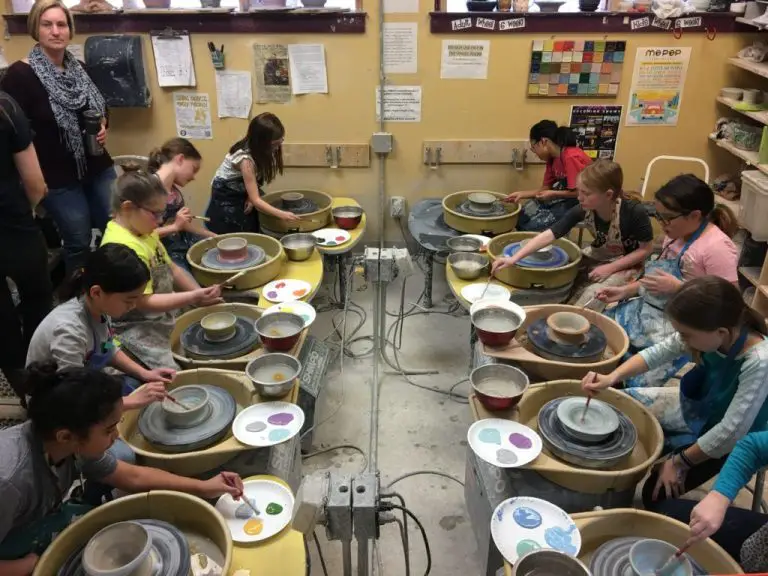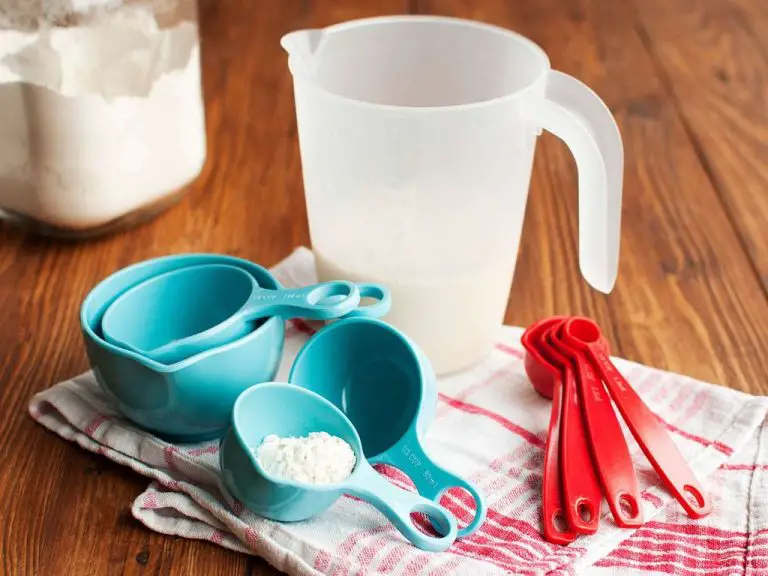What Air Drying Clay Doesn T Crack?
Air drying clay is a type of modeling clay that cures through evaporation without requiring heat. It is a popular choice for crafters and artists because it is convenient to work with and does not require baking or firing. However, a common issue with air drying clay is that it can crack as it dries and cures. Some types of air drying clay are more prone to cracking than others.
There are several types of air drying clay that are less likely to crack while drying. These include polymer clay, cellulose clay, paper clay, cold porcelain, and air dry terra cotta clay. These clays contain ingredients that help prevent excessive shrinkage and cracks. Artists choose these clays when they want to create delicate items, detailed sculptures, or pieces that require strength and durability.
This article will provide an overview of the most popular types of air drying clay that do not easily crack. It will cover their ingredients, benefits, recommended uses, and tips for preventing cracks. The goal is to help readers understand why these clays stay flexible and crack-resistant for their artistic creations.
Polymer Clay
Polymer clay is one of the most popular air drying clays and does not crack easily when baked properly. It is made of polyvinyl chloride (PVC) mixed with plasticizers and colorants. Popular brands of polymer clay include Sculpey and Fimo.
Polymer clay is lightweight, easy to work with, and available in a wide variety of colors. It can be molded into any shape and baked in a regular oven to harden it. The baking process polymerizes the ingredients, forming strong interlocking bonds that make the finished piece very durable.
To prevent cracking, it is essential to properly condition polymer clay before baking. Conditioning blends the ingredients evenly and makes the clay smooth and pliable. According to the Sculpey blog (source), unconditioned clay is much more prone to cracking. Knead the clay thoroughly until soft and smooth.
Polymer clay should also be baked at the proper temperature and duration specified on the packaging or clay brand’s website. Baking too hot or too long can cause cracks. Let clay pieces cool completely before handling to prevent stress cracks.
Cellulose Clay
Cellulose clay is made from cellulose fiber, often from recycled paper, that is mixed with non-toxic binders and a small amount of ceramic clay. It has been developed by companies like Activa and Makins as a lightweight air-dry clay that has very low shrinkage and cracking after drying.
Some common brands of cellulose clay include Paperclay, Makins Ultra-Light, and Activa La Doll Premier Paperclay. Due to its light weight and durable finish, cellulose clay is popular for making sculptures and dolls.
Cellulose clay is beneficial because it has very little shrinkage as it dries, so pieces dry and harden without warping or cracking. It also offers a lightweight yet very strong material when dry. Its low clay content means it dries faster than pottery clay. The cellulose fiber makes it highly absorbent so it can accept paints, stains, and glazes.
While regular air-dry clays tend to crack as the water evaporates, cellulose clay retains its shape and avoids cracks through the bonding of the cellulose fibers. This makes it an ideal clay for complex sculptures, 3D art, dolls, and items that need an extremely smooth finish.(https://www.oxfordclay.co.uk/blog-1/what-is-paperclay)
Paper Clay
Paper clay is a type of air drying clay made from cellulose fiber from recycled paper, such as newspaper, mixed with an adhesive like glue or starch. Some common brands of paper clay include Activa Paper Clay, La Doll Premier Paper Clay, and Midnight Paper Clay.
Paper clay offers several benefits that make it a popular choice for artists and crafters. Importantly, paper clay doesn’t crack when drying if it’s allowed to dry slowly and thoroughly. The cellulose fiber creates a strong bond as the water evaporates that prevents cracking. Paper clay also has a soft, lightweight texture and is easy to shape and sculpt. Many people find it more enjoyable to work with than polymer clay or ceramic clays.
Paper clay is strong, versatile, and lightweight when dry. It can be sanded, carved, drilled, and painted once fully dry. Paper clay is an excellent choice for making jewelry, figurines, ornaments, and other decorative items that require fine detail and durable finished pieces. The finished pieces don’t require sealing or glazing. With proper drying time, paper clay items can last for many years.
Cold Porcelain Clay
Cold porcelain clay is a type of air-drying clay made from cornstarch and glue. Unlike traditional clays, it does not require baking or firing to harden and cure. Instead, it air dries to a hard, durable finish.
To make cold porcelain clay, you simply mix cornstarch, glue (such as white school glue), and sometimes baby oil or lemon juice together into a dough. The exact recipe can vary, but a basic mix is 2 parts cornstarch to 1 part glue. The clay is lightweight, smooth, and easy to work with.
Cold porcelain clay has several benefits that make it a popular choice for crafters and modelers. Since it air dries, you avoid the additional steps of baking or firing required with traditional clays. It also remains flexible when dry, so finished sculptures do not crack. Cold porcelain has very little shrinkage as it dries, minimizing cracking. And unlike polymer clay, it does not soften when heated, allowing for greater detail work.[1]
Overall, cold porcelain clay is an accessible and versatile air-drying modeling material suitable for a wide range of projects.
Air Dry Terra Cotta Clay
Terra cotta clay is an air-drying earthenware clay that is made from natural ingredients like clay, sand, and organic matter. It has been used for centuries to create pottery, sculpture, and decorative objects. When properly prepared, terra cotta clay can be air-dried without cracking or warping.
The natural ingredients and low firing temperature allow terra cotta clay to slowly release moisture as it air dries. This prevents cracking and makes it an ideal choice for handbuilding and modeling clay craft projects. As long as the clay is allowed to dry slowly and evenly at room temperature over the course of days or weeks, terra cotta sculptures and objects can be created without cracks forming.
Terra cotta clays like Amaco Moist Terra Cotta are specially formulated for air drying and provide natural earthenware clay that resists cracking and warping.
Preventing Cracks
There are several techniques you can use to help prevent air dry clay from cracking as it dries:
Proper Storage
Store unused clay in an airtight container or plastic bag to prevent it from drying out. Clay that has already started to dry will be prone to cracking when worked with or as it finishes drying. Keeping it sealed will help maintain an even moisture content (Source).
Kneading Before Use
Before using clay that has been stored, knead it thoroughly to evenly distribute moisture throughout. This prevents drier areas from forming that may crack (Source).
Slow Drying
Allow projects to dry slowly to prevent cracking. Quick drying can cause clay to shrink unevenly. Place projects in an area with moderate humidity and temperature (Source).
Sealing
Seal completed projects with acrylic paint or varnish. This helps stabilize the clay and prevents cracks from forming over time. Multiple thin coats work better than one thick coat (Source).
Baking
For polymer-based clays, baking according to package directions can help set the clay and prevent future cracking. Allow to cool slowly after removing from oven.
Uses of Non-Cracking Clay
Non-cracking clays like polymer clay, cold porcelain, and paper clay are commonly used to create jewelry, figurines, decorative items, and crafts. Their versatility and durability make them ideal for detailed and delicate projects.
Jewelry makers often choose polymer or cold porcelain clay for creating beads, pendants, charms, and other accessories. These clays hold fine details well, allow for a smooth finish, and won’t become brittle and crack over time. Many jewelers also appreciate that these clays don’t require firing.
Sculptors frequently work with polymer clays for figurines and miniatures. It allows intricate shaping while remaining strong and flexible. Unlike oil- or water-based clays, finished pieces made from polymer clay won’t warp or crack while drying.
For decorative items like vases, boxes, and wall plaques, paper clay is a top choice. It has a papier-mâché-like texture and absorbs acrylic paints easily. Paper clay won’t crack or crumble when drying or painted. It’s also lightweight and very workable.
Crafters often select air dry clays for kid-friendly projects. These clays are non-toxic and don’t require oven firing. They hold shape well when dried, allowing for durable finished crafts. Popular uses include clay charms, beads, and ornamental objects. With proper handling, air dry clays produce lasting crack-free pieces.
Pros and Cons
Air drying clays that don’t crack have several benefits. According to The Pros and Cons of Working With Air Dry Clay, air dry clay is inexpensive, accessible and easy to use. It’s a great option for beginners and hobbyists who want to work with clay without investing in a kiln. Air dry clay also comes in a wide variety of colors, allowing for creative freedom in projects.
However, there are some drawbacks to be aware of. As noted by One Clay to Rule Them All: The Best Air Dry Clays for Artists, air dry clay can be less durable than fired clay, and may chip or break more easily. Pieces made with air dry clay also cannot withstand moisture or water. Proper storage and protective coatings are needed to preserve finished pieces.
Overall, non-cracking air dry clays provide an accessible, user-friendly clay option suitable for crafters and hobbyists. But the tradeoff is somewhat lower durability compared to fired clays. Knowing the limitations allows crafters to select the best clay type for their specific project needs.
Conclusion
To sum up, there are a few types of air dry clay that don’t have a tendency to crack as they dry. Polymer clay is very flexible and elastic, making it resistant to cracking. Cellulose clay contains a binder that prevents shrinking and cracking. Paper clay also resists cracking due to the cellulose fiber. Cold porcelain clay has a smooth, non-porous surface that doesn’t crack easily. Lastly, air dry terra cotta clay can be treated to reduce cracking.
For most modeling and sculpting uses, polymer clay is likely the best option as it can be shaped in very fine detail without risk of cracking, even for larger sculptures. The finished pieces are lightweight yet strong. Cellulose clay and paper clay are good choices for simpler decorative items and crafts. Cold porcelain clay creates a porcelain-like finish but requires sealing. Treated air dry terra cotta works when an earthy terra cotta look is desired.
When choosing an air dry clay, consider the project and design needs. Polymer clay offers the most flexibility and strength but other options may be suitable depending on the application. Test small samples when possible to ensure the clay suits the specific crafting needs.



